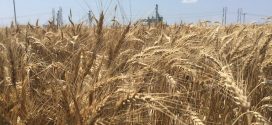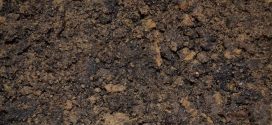After a June decision from the Federal Aviation Administration, small drones flown for commercial use now have finalized rules to which they must adhere. Effective later this month, the new rules apply to unmanned aircraft systems (UAS) that weigh less than 55 pounds. These rules have the potential to make drones more accessible for agriculture applications. A recent Farm Industry …
Read More »Burners Offer Insect Control Advantage
Several weeks ago, we shared about our experience with using a row crop burner to address weed pressure at The Farm Research Center in Garden City, Mo. You may recall that burners use a propane torch to create heat. The heat controls pre- and post-emergent weeds and grasses without damaging the crop itself. As a residual benefit to weed control, we’ve noticed …
Read More »Research Center Gets Big Wheat Yields
At The Farm Research Center in Garden City, Mo., we recently harvested our wheat plots, and we saw some outstanding yields. In the tests, our BigSweetYield DB program produced the highest yields at 113 bushels per acre. BigSweetYield DB combines our cold-processed sweetener, BigBioYield biological with multiple beneficial bacteria and Yield Booster micronutrient blend. The following chart summarizes the yield …
Read More »Corn Hybrid Development Takes Detasseling
Although it’s still mid-season for the 2016 corn crop, The Farm Research Center in Garden City, Mo., has already been planning for future crop years. Namely, our staff this week has focused on corn hybrid development work. A single corn plant yields tassels, which are the male anatomy of the plant, to produce pollen that will fertilize corn ears, which …
Read More »As a Molybdenum Source, Sodium Molybdate Aids Nitrogen Use
To continue our email series about micronutrients, this week we turn to molybdenum. Our Yield Booster product supplies sodium molybdate as a molybdenum source. You may recall from past emails that Yield Booster combines a 12-9-6 fertilizer analysis with seven vital micronutrients: boron, cobalt, copper, iron, manganese, sodium molybdate and zinc. Molybdenum influences a plant’s nitrogen status. Specifically, molybdenum generates …
Read More »Burn Out Weeds
With the rain that we and our growers had earlier in the season, we’ve seen and heard about weeds posing a big challenge. In some cases, we’ve had farmers replanting due to strong weed pressure. This spring, we at BigYield.us have experimented with managing weeds using a Red Dragon row crop burner. Burners use a propane torch to create heat that …
Read More »Check Cobalt in Your Legumes
Like we’ve shared in several recent newsletters, we at BigYield.us view supplementing micronutrient levels as a potential strategy to maximize yields. Limited micronutrient supplies may prevent crops from taking full advantage of otherwise favorable environmental conditions and achieving their yield potential. Yield Booster from BigYield.us adds seven vital micronutrients – boron, cobalt, copper, iron, manganese, sodium molybdate and zinc – to …
Read More »Soil Carbon Stores Can Promote Plant Growth
Throughout the world, soil resources store a significant carbon load. Relative to the atmosphere, the soil contains more than three times as much carbon, according to a 2012 publication from the United Nations. Soil carbon may originate from organic or inorganic sources. Bedrock or carbon dioxide formatted as a mineral act as inorganic carbon sources. Developed from decaying organic materials …
Read More »The New VISPS Program
Brix Levels Can Indicate Crop Health, Quality
For field crop and forage producers, reading and interpreting Brix levels may be relatively novel concepts. The specialty crop industry, however, has used Brix readings to assess crop health and quality for some time. Brix levels represent the soluble solids content present in a liquid solution, according to a video from The Ohio State University. Soluble solids include amino acids, …
Read More » BigYield High Yield Soybeans, High Yield Corn, and High Yield Wheat
BigYield High Yield Soybeans, High Yield Corn, and High Yield Wheat









